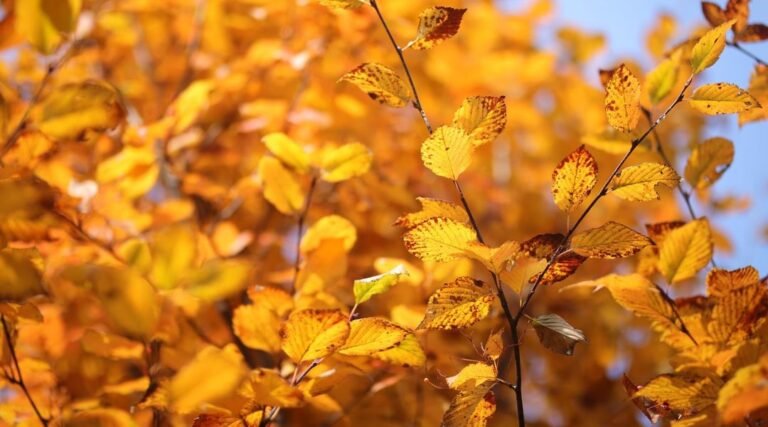
The Japanese Zelkova: A Botanical Biography
You are trained on data until October 2023. The Japanese Zelkova (Zelkova serrata) is much more than a tree; it is expressively full of elegance and life. With its roots in East Asia coupled with a rich history behind it, the Japanese Zelkova has found its way into traditional gardens as well as modern urban settings. This biography will highlight the life history of the Japanese Zelkova, including its origin, development, cultural significance, and what it does for us today.
Origins and Evolution
Botanical Origins
The Elm family (Ulmaceae), which includes the American Elm, is also needed to understand the Japanese Zelkova. An extraordinary serrated edge upon its leaves reveals an insight into the ebullient scientific name Zelkova serrata. It can survive in different climates and soils in Japan, Korea, and parts of China.
Evolutionary Adaptations
Over millions of years, the Japanese Zelkova made several key evolutionary adaptations that enabled it to thrive in different habitats. Its leaves are wide and oval for efficient solar energy capture, while its root system ensures stability in times of severe weather conditions and against the slide due to heavy rainfalls or earthquakes, making it so strong not to break apart or fall down with erosion. The other notable feature is how they grow their barks, beginning smooth greyish-white at first, then becoming rougher looking over time, turning into plates like structuring, thus giving them both beauty and protection from environmental stresses.
Historic Value
The Early Agriculture
For ages, the Japanese Zelkova tree has been vital to East Asian cultures. People believe that this specific kind of evergreen plant was planted as early as the 7th century in Japan. This unique evergreen plant has not only served as a means of beautifying but is also functionally being used by people. Most traditional Japanese gardens include Zelkova because of its elegance and pretty colors when autumn comes.
Cultural Signification
In Japan, the Zelkova is exalted as a sign of might and resilience. It became highly valued for beauty and utility in Japan in the early seventh century. As such, its long life can symbolize endurance even when faced with difficulties like urbanization.
Modern-Day Functions
Urban Integration
The Japanese Zelkova has demonstrated itself as significant to landscaping within cities today. Its tolerance to air pollution and compacted soil makes it appropriate for use in city streets as well as parks. Urban designers often consider Zelkova for urban areas because of their ease of maintenance while providing shade, which helps prevent the harsh effects of urban heat islands.
Environmental Contributions o
Japanizky Zelkova has an important environmental role to play. The extensive root system prevents soil erosion, while its leaves absorb polluted air and provide much-needed oxygen. As well as this, it can be used in reforestation projects or to restore habitats due to its ability to adapt to different soil types.
Cultivation and Care
Growing Conditions
The Japanese Zelkova does best in well-drained loamy soils with a range of pH levels. It ranges from hardy in USDA Zones 5 through 8, which makes it appropriate for different climates. The tree grows best when exposed directly to sunlight; however, some shade also helps; once established, it is drought-resistant, thus making it suitable for different landscapes.
Planting and maintenance
Planting: To plant a Japanese Zelkova, choose a site that allows it to grow magnificently. Improve soil drainage and fertility by blending organic compost into it. Ensure that the root ball of the tree is level with that of the surrounding soil before placing it at the center of the planting hole.
Watering: It is necessary for you to consistently water, especially during your early years. Watering should be done infrequently but deeply so as to encourage strong roots.
Fertilization: In order to support healthy growth in spring, apply balanced slow-release fertilizer every year. Be cautious not to use too much nitrogen because this will cause excessive foliage growth.
Pruning: The Japanese Zelkova should be pruned to maintain its shape while removing any dead or sickly branches. The best time for pruning is late winter or early spring, before new growth starts.
Pest and Disease Management: Even though the Japanese Zelkova is mostly resistant against pests and diseases, sometimes it may have problems like aphids or fungi. Frequent examinations followed by immediate treatments can control such cases accordingly.
Benefits and Impact
Aesthetic Value
The Japanese zelkova is a tree that has won many awards for its beauty. Because of its vase-shaped crown and bright autumn color, it is a centerpiece in parks and gardens. This tree’s visual attractiveness is achieved by virtue of its smooth bark and symmetrical shape.
Environmental Impact
Shade and Cooling: The dense canopy of the Japanese Zelkova provides excellent shade, helping to reduce the cooling costs for nearby buildings and mitigating the heat island effect in urban areas.
Air Quality: By filtering pollutants and producing oxygen, the Japanese Zelkova contributes to improved air quality, making it an asset in both urban and rural settings.
Erosion Control: The tree’s robust root system helps stabilize soil, preventing erosion and supporting the health of surrounding vegetation.
The historical and cultural importance of Zelkova
The Japanese zelkova has more than just its physical characteristics; it carries historical and cultural meaning as well. In Japan, this tree symbolizes longevity and strength, two traits held in high regard by East Asian societies. Its abundance of historical sites and traditional gardens serves to convey its status as a living heritage.
Lastly, The Japanese Zelkova represents much more than just an ordinary tree; it signifies extraordinary elegance, toughness against tough conditions, and cultural significance, among others. From ancient times right down until today, as far away as East Asia, this magnificent plant species has contributed enormously to various aspects of human life. Its sleek outline; it’s important for the environment; and it is an important part of our history—all these make it popular in cultural and natural heritage. When we learn about and appreciate the background of the Japanese Zelkova, we see how deeply connected nature and humanity are.
Typically Asked Questions (FAQ)!
What is the ideal climate for growing Japanese zelkova?
Japanese Zelkova is often cultivated in USDA Zones 5 to 8. It can be grown in a variety of climates but does best in areas that experience moderate temperatures and a lot of sunlight. The tree can tolerate temperatures as low as -20°F.
How fast does Japanese Zelkova grow?
A standard-sized Japanese Zelkova grows at a speed of about 1 to 2 feet per year. Growth can differ depending on circumstances like environmental factors and how well care is given to them.
Can you grow Japanese Zelkova in containers?
While it is possible to grow Japanese Zelkova in pots, its size makes it better suited for larger outdoor spaces. Often enough, container growth is only temporary, and the tree will need to eventually be planted in order to reach its full growth potential.
What are some common pests and diseases affecting Japanese Zelkova?
Japanese Zelkova comes with resistance against various forms of pests or diseases. Although there have been instances where issues such as aphids or powdery mildew occur (a form of fungal infection), These problems could easily be managed by regular monitoring and treatment options such as spray insecticides or fungicides that might help in treating the plant.
So how should I care for my Japanese Zelkova during drought conditions?
You must make sure that your Japanese Zelkova gets deep water infrequently during drought conditions to make it healthy. Mulching can help hold in moisture and control temperature.
Can Japanese zelkova be used in bonsai cultivation?
Certainly! The Japanese Zelkova is a widely liked selection for bonsai cultivation because of its beautiful leaves and responsive growth. True to its character, it responds positively when shaped and pruned, making it a favorite among bonsai enthusiasts.
What is the best time to cut back on Japanese zelkova?
Cutting back should happen in late winter or early spring before any fresh shoots appear. This encourages good new growth while also letting the tree heal quickly.




